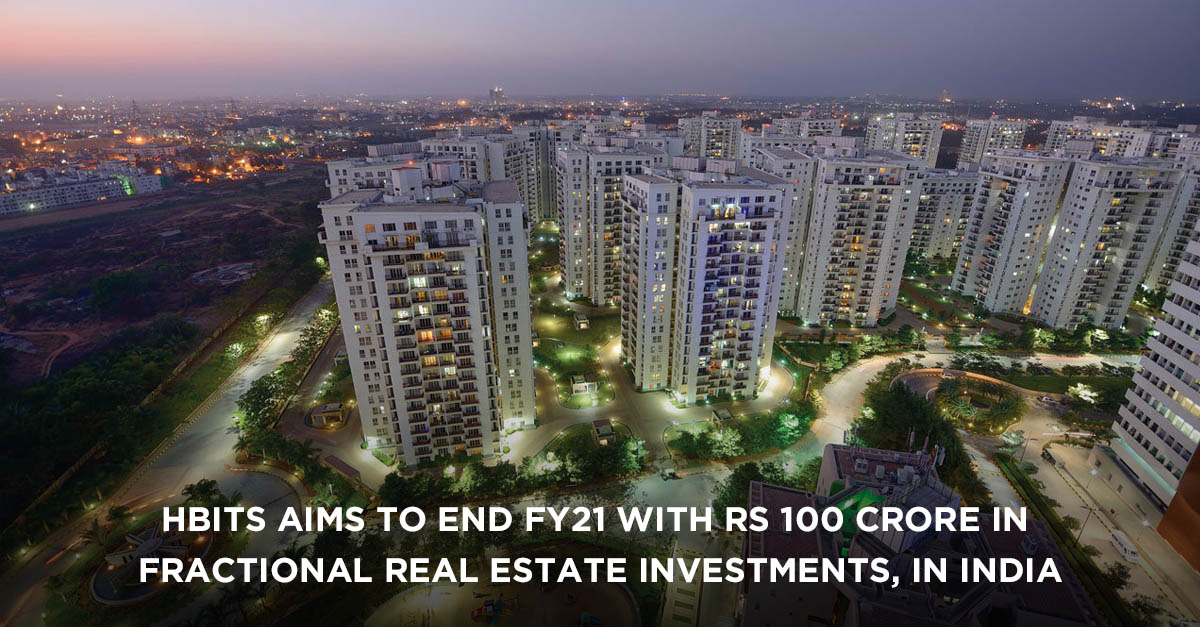hBits aims to end FY21 with Rs 100 crore in fractional real estate investments, in India
Fractional ownership in real estate is the combined ownership of a single asset by multiple investors. Typically, an individual unit is divided into three to four fractional shares with a title deed each. These deeds are transferable and mortgageable, similar to individual ownerships. Also, fractional ownership allows personal use, based on split and scheduled occupancy between deed holders.
This practice, which is prevalent in the US and Europe, is now gaining ground in India. Early movers like hBits have already generated $8.25 million in investments for two projects. The company aims to end FY20–21 with nearly $13.7 million in investments. hBits’ optimism boils down to its 10,000-strong investors base, which the company claims is incentivized by a steady and secure ROI at 15–18%. If true, what are some of the other driving forces behind the uptick in fractional ownership?
Liquidity, accessibility and optionality
Conventional real estate investments, particularly in the premium segment, tend to be capital intensive, involving the usual market risks. Besides being inherently illiquid, such investments often involve long lock-in periods before they can be sold. This is perhaps why premium real estate and second homes markets are often accessible only to high-net-worth individuals; the rest are priced out.
Conversely, in fractional ownership, affordability is the primary driver. Since the total cost of the asset is borne by many, it becomes more accessible to investors with varied financial capabilities. And unlike conventional investments, fractional ownership is accompanied by little to no lock-in periods, hence more liquid. In addition, the lifecycle costs, including routine maintenance and registration fee, are split between multiple stakeholders, as per their share holdings.
As far as second homes are concerned, fractional ownership offers added advantage. Such properties, often unoccupied and without regular maintenance and attendants in the past, are now regularly occupied and benefit from shared accountability, under fractional ownership on a rotational basis. This helps preserve the value of the property in the long term.
Tokenized fractional ownership
Blockchain-based tokenization of real estate assets allows for some of the same advantages of typical fractional ownership, with tokens representing a certain number of shares in a given real estate asset. But tokens are secured through immutable digital ledgers and are tradeable via crypto exchanges or Alternative Trading Systems (ATS). Such transactions are decentralized, have remote access and boast highest-level transparency. Investors gain access to global markets and an opportunity to diversify their holdings. Developers, on the other hand, can raise capital easily and tap into diversified investor pools. Such multi-fold benefits are poised to drive the global tokenized real estate market, which is expected to yield at least $4.2 billion in revenues by 2025.
Many new Indian real estate markets with a strong tech focus are now exploring fractional ownership programs. Lower entry barriers for investors allows aggregators like hBits to tap into new buyer segments, particularly from the middle class, which constitutes the highest majority in India. To this effect, fractional ownership can be deemed both inclusive and democratized, which could play well into the current market dynamics in India, characterized by growing tech-savvy buyers, rising disposable income and vast supply. In other words, fractional ownership makes for a win-win proposition for investors, developers and the real estate ecosystem at large.




